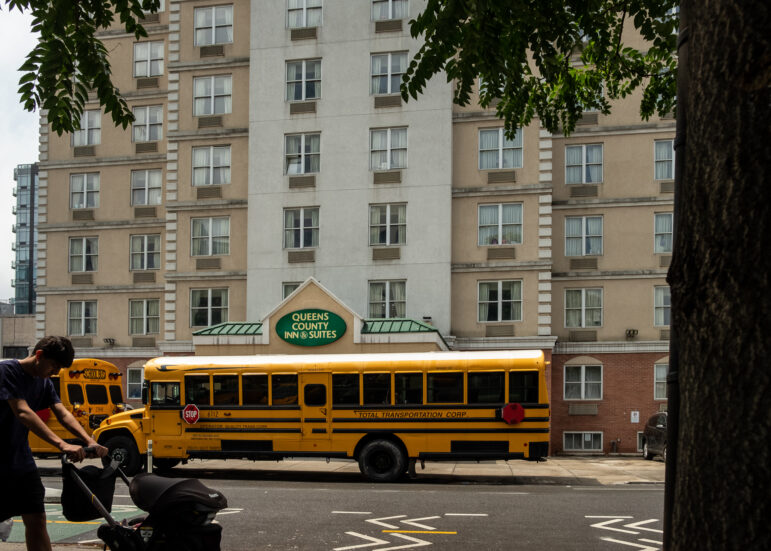The report reveal disparities by gender and race, with women and people of color having higher levels of debt and facing more challenges in repaying it.

Gerardo Romo / NYC Council Media Unit
One in four New York City residents are burdened by student loan debt, according to the findings of a recent survey.
The survey, by the Community Service Society of New York,* was conducted by phone from July 6 through Aug.7, 2023 and reached 1,758 New Yorkers.
It revealed disparities by gender and race, with women and people of color having higher levels of debt and facing more challenges in repaying it. Across income categories, households with student loan debt were more likely to experience severe economic hardships compared to similar households without such debt, raising questions about whether higher education is still a secure pathway to upward mobility.
City Limits spoke with Carolina Rodriguez, co-author of “The True Cost of a College Degree” report based on the survey. As director of the Education Debt Consumer Assistance Program, Rodriguez helps clients to create and implement a strategic plan to tackle their debt.
Having student loan debt is compounded by the high cost of living in New York City, she explained, where expenses such as rent and healthcare can be significant, while wages remain stagnant.
“When you look at how much, let’s say, a four-year education costs you, and your wages and earning capacity, it’s just not yielding the amount that you would need to be able to afford the cost of living, plus repay your debt in a reasonable time,” Rodriguez said.
One of Rodriguez’s clients took out student loans almost two decades ago. She defaulted on the debt and declared bankruptcy, thinking that was the best solution, but only got a reduction of her total student loan debt and still had to make payments.
The process of helping her client get some relief from that debt was long and complicated, Rodriguez said. Although the borrower had been a public service employee for many years, she was unable to benefit from any student loan forgiveness programs.
“It really speaks to the complexity of our system that even those people who attempt to get some relief through bankruptcy for example, might not realize that they may not get complete relief and could struggle for years on end,” Rodriguez said.
Another startling case happened to a father who had taken out a loan of $100,000 to put his son through college. Unable to afford a repayment plan, it was only a matter of time before he defaulted on the loan.
Defaulting can have dire consequences, such as wages being withheld by the government, or an up to 15 percent reduction in Social Security, disability or retirement funds. Student loan debt has no statute of limitations, so legal repercussions can happen indefinitely.
“An increasing number of parents are borrowing a lot, and the problem is that they don’t have the same repayment options that people do when you take out loans for your own education,” Rodriguez said. “So they are in this limbo where they cannot afford any repayment plan.”
A Parent Plus Loan loophole—set to close in July 2025—allows parents who do multiple loan consolidations to access a more flexible repayment plan. The client had already consolidated multiple loans, but needed one more to be eligible for the program. This led to the ironic possibility of having to go back to school to take out another loan, in order to qualify for the more affordable payment plan.
Rodriguez and her team found that low-income borrowers are the most severely affected, but they are not the only ones struggling with student loan debt. Among moderate- to high-income New York City households with such debt, over half reported experiencing three or more economic hardships, including transportation expenses, steep childcare costs and reduced savings.
The study proposes a number of solutions, including bankruptcy reform and more affordable public higher education programs. Rodriguez said that those who already have student loan debt should not delay facing it, seeking out financial advice where necessary. Students considering a degree should apply to multiple institutions, carefully weighing the financial aid offered by each according to their earning potential post-graduation.
“If it takes you two decades to see the return on investment, you’ve already lost a lot of time to be able to save for retirement, buy a home and engage in all the other activities that you thought getting a degree would allow you to,” she advised.
*Community Service Society is among City Limits’ funders.
To reach the reporter behind this story, contact Anastasia@citylimits.org. To reach the editor, contact Jeanmarie@citylimits.org
Want to republish this story? Find City Limits’ reprint policy here.







